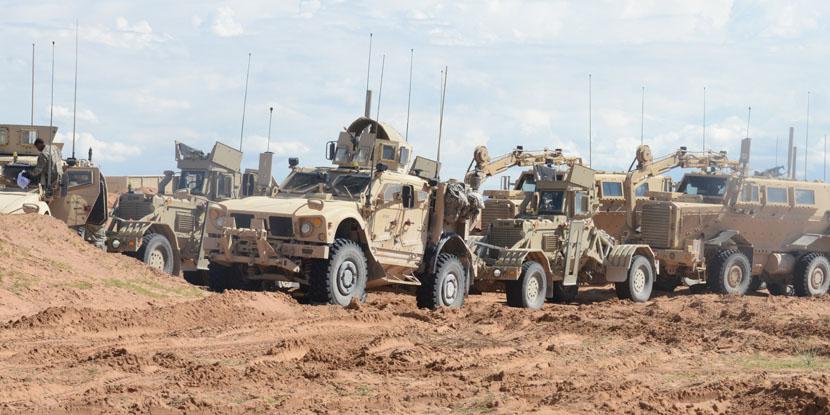Generals Contemplate Network Modernization Challenge
Two U.S. Army generals intimately involved in the modernization of the service’s network are considering a competition for industry and academia to come up with cutting-edge solutions, such as artificial intelligence, for the future network.
In an example of great minds thinking alike, Maj. Gen. Peter Gallagher, USA, who leads the network modernization cross-functional team (CFT), and Maj. Gen. David Bassett, USA, the program executive officer for command, control and communications-tactical (PEO C3T), recently realized during an interview with SIGNAL Magazine that both were thinking along the same lines.
Gen. Bassett says he would like to initiate a competition for industry and possibly academia within the next 12 months to develop artificial intelligence and machine learning software that fits within the Army’s newly established framework for software application development. “It does two things. It generates capabilities. It also provides the feedback we need to refine that framework over time. That developer feedback is too important to making the toolset better. We hope to get that kind of feedback over the next year,” he says.
Gen. Gallagher responds that the suggestion is a great idea. “As we’re looking at opportunities as a cross-functional team, one of the things we’re exploring is those grand challenge opportunities,” he reveals.
The Defense Advanced Research Projects Agency (DARPA) has popularized the grand challenge process, which awards prizes for potentially revolutionary technologies. For example, DARPA has conducted grand challenges for autonomous vehicles and cybersecurity.
“This is another area where we can leverage the partnership and do what’s right for the Army by reaching out to industry and academia because there are some really smart folks out there, and we want to make sure we can leverage their talents,” Gen. Gallagher adds.
The generals stress the importance of providing technology that can be easily integrated rather than offering stand-alone products. “The only way I’m going to get them to do that is if they know what the rule set is, they understand what the environment is and then they get some experience working within that,” Gen. Bassett says.
The competition may happen sometime within the next year, but Army officials already are engaged in a flurry of network modernization activities over the coming months. For example, the generals are engaging with industry in a number of ways, including what Gen. Gallagher calls technical exchange meetings. “Back in February, we had a technical exchange meeting with industry, so in the next 90 days we are going to be looking to see the results of the technical exchange meeting, what came back to us in terms of white papers and what is worth experimenting on in the next fiscal year,” Gen. Gallagher reports. “There are a lot of opportunities to get capability in the hands of soldiers and get some feedback. We want to leverage our industry technical exchange meeting to see what results they can produce.”
The CFT will engage in another technical exchange meeting the last week of July in Seattle “to see what is in the art of the possible for cloud in a distributed mission command environment,” Gen. Gallagher adds. Cloud computing, artificial intelligence and machine learning are “the next ridge line as we go forward with the Army network of the future,” he says. “That is going to be the focus of that technical exchange meeting in July: what mid-term and longer-term solutions might we be able to leverage based on industry support?”
Furthermore, the service has been experimenting with a battalion from the 82nd Airborne Division and is now going to include the 2nd Stryker Cavalry Regiment and the 173rd Airborne Brigade in Europe. Officials also plan a military exercise, which will be conducted with special forces and with units from the United Kingdom. “We have an assessment team going over there to capture data to inform future decisions for Army senior leaders on the makeup and composition of this integrated tactical network and the adjustments we need to make,” Gen. Gallagher reports.
In addition, Army Secretary Mark Esper recently announced the CFT will be setting up shop at Aberdeen Proving Ground, Maryland, where the PEO C3T is already headquartered.
To learn more about the Army’s modernization efforts, read the August issue of SIGNAL Magazine.





Comments